Most of the people who live on Earth have been through some sort of a flood at a certain point in their life. Regardless of the fact that it was a small stream coming out of its channel or a hurricane flood, we all know how it is to see water everywhere. Given the fact that this is rather a well known phenomenon, you might think that people know how to prepare for a flood. Still, with every flood, there are new problems and people are caught unprepared.
[the_ad_placement id=”in-text-1-type-r”]Flood preparedness should be a mandatory training in schools, especially in areas that are flooded frequently. This way, by starting on an early age, people will finally understand that knowledge on this topic is extremely important. We all know that floods happen because there is too much water in a short period of time and the soil can’t absorb it anymore. This usually happens when there are heavy and steady rains, hurricanes, tsunamis, typhoons, cyclones, and so on.
Still, the common floods, the ones that occur more often, happen as a result of heavy rains. There is nothing spectacular about them, there is no force of nature unleashed above your head, just a rain that doesn’t want to stop. This rain supersaturates the rivers, lakes, ponds and streams in the area making them to leave their channels and flood everything around.
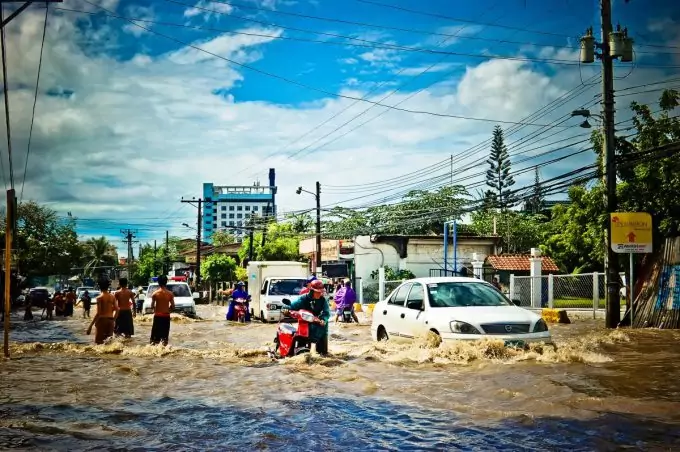
During a heavy rain that doesn’t stop, it’s very important to follow the weather forecasts. If you hear terms like “flash flood”, “flood watch”, or “flood warning” it’s time to put in action the flood preparedness plan (the one that you should have prepared in advance). The difference between the terms “watch” and “warning” is also very important. If there’s a watch you must be alert and ready for action. If you here the term “warning” the flood is already coming or it will come in a very short time. This is the time to act.
Easy steps to complete flood preparedness
Everyone should know a few basic rules when it comes to preparedness for floods. Usually floods are not so hard to spot and there is some time before the waters start pouring in your living room. Also there is the matter of location when it comes to floods.
For example, if you live close to a body of water then you must know that your building or house is the first one to be hit by the flood. If you see the water level raising it’s time to evacuate and ask questions later. If your house is built on an elevated terrain then you may be spared of any damages but first make sure to check with the authorities. Sometimes the water level can get pretty high.
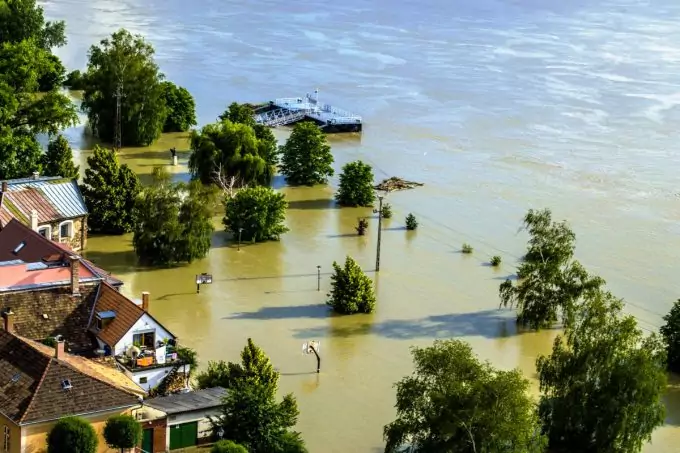
Water’s fury is not something to toy with as it will carry everything it can get. Waters take houses or parts of houses, they uproot trees, and put down phone towers. Sometimes they are so powerful that they break bridges and isolate entire cities.
Precautions to take before the disaster
If you know there are frequent floods in your area, your flood preparedness must be to the maximum. Here are a few precautions that you need to take:
- The first and most important precaution you can take is to not build your house in an area that is easily floodable. This is a very important aspect to consider when choosing a terrain for your future home. Nobody wants to have a lake in their living room every year.
- If you don’t have a choice and you must build your house on a floodplain then make sure that the foundation is solid and high enough. Check with local water authorities and find out what is the medium level the water gets during a flood. This way you will know how high to make the foundation. Also, avoid building a basement – the water will flood it every time.
- Build special constructions to stop the water. Make small walls (beams and levees) out of bricks and stones that will protect the house from getting flooded.
- If you already have a basement, seal the walls with waterproof compounds to avoid flooding your house from underneath.
- Scan your neighborhoods in order to find the closest higher grounds. If there is a flash flood you may not have the time to reach a shelter or to run from the waters. After the flood passes, rescue teams will find you and bring you to safety.
- Develop an evacuation procedure and a communication plan with your entire family. You might get separated or not be together at the moment of the flood and it’s vital that everyone knows the drill.
Measures to take when there’s a flood warning
As we explained earlier, a flood warning means that the flood is imminent. Now it’s the time to apply everything you’ve learned about preparedness for floods.
- Prepare your emergency kit and make sure that everything is ready to go. Every member of your family should have an emergency kit in case of floods. This way everything will be easier to carry. This will be a survival scenario and for this, you can be prepared with an already made survival kit. Read all about it in our detailed article about the best survival kits on the market.
- If there is an evacuation order, don’t wait anymore. Get in the car and go! If the waters are high, they can flood an entire house for hours, even days. You don’t want to be trapped inside when the level starts raising.
- If the water is rising too quickly try to get to a higher ground. Flash floods are not that violent and they usually go as fast as they come. If you are in the car you might get trapped in the torrent and carried for a few miles.
- Move your furniture and anything that you don’t want to be ruined by the water to an upper floor. This way, even if the water gets in, the damages will be less significant.
- Always make sure to disconnect electrical appliances and if possible cut the power entirely. Water is a good electrical conductor and a plugged in appliance may lead to injuries.
- Make sure you have enough gas in your car’s tank. You should also have a back-up tank to use in case you run out. Gas stations can get destroyed by floods and there will definitely be slow traffic.
The basic idea in an emergency situation (take any scenario you want) is to be calm and prepared. That’s why it’s of tremendous importance to know how to prepare for a flood.
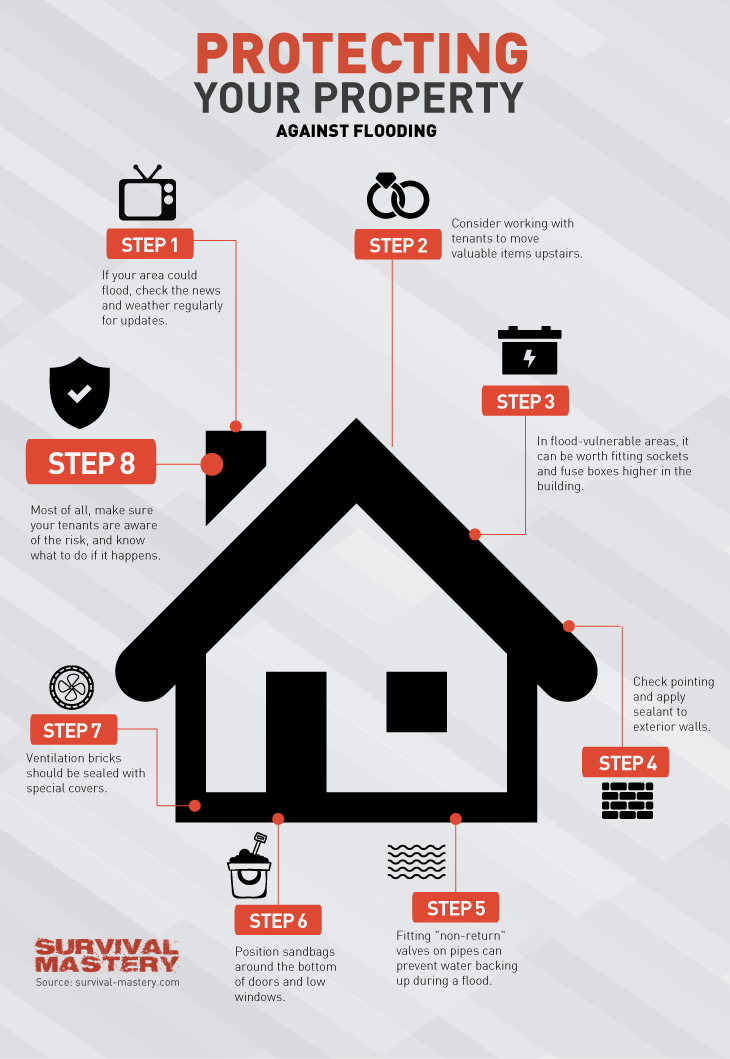
Now, that you are prepared, you also need to know what to do during the flood, when the water levels are high and they sweep everything in their way. Here are a few tips on how to act during the flood:
- Don’t try to cross moving water. If the current is strong, even 15cm (6 inches) deep water could put you down. If you don’t have any choice, try to cross through still waters and use a stick to check what’s in front of you. Moving waters usually dislodge rocks, trees and other things from the ground. There might be big holes and you might step right into one and break your leg.
- If the area is already flooded, don’t drive your car through it. You don’t know what’s under the water and you could get stuck. If this happens and water starts coming inside the car, leave immediately.
- Don’t get in the water if you see electrical equipment fallen in it. Also, don’t touch anything that might have electricity in it while you are in the water or wet.
Life after the flood: what to do immediately after
Everyone’s first instinct after the flood is to run home and check for damages (in case you had to evacuate). If you are home, you want to make sure that everyone you know is safe. If the power lines are down so will be the phone lines and the communication might be difficult or impossible to establish.
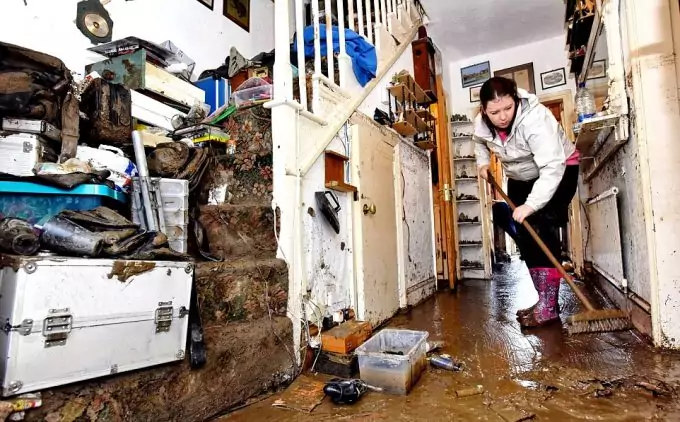
Regardless of how impatient you are to find out news about loved ones, don’t get on the road until you are cleared by authorities.
[the_ad_placement id=”in-text-2-type-r”]Here’s a small list of do’s and don’ts after the event that you should add to your flood preparedness training:
- Listen to the news on the radio or watch them on TV to find out where are the safe areas and where the water level is still high;
- Don’t get on the road immediately after the flood. Waters usually break or weaken the road’s structure and you might make a road collapse under your car weight. Check with the authorities to find out which roads are safe;
- Don’t drink water from a contaminated source. The best source immediately after the flood is bottled water. Floods usually contaminate the water table with oils, fats and all sorts of nasty things making the water unsafe to drink;
- Stay away from the water where power lines are down. If a live wire hits the water everyone in the water will get electrocuted. If you see a line down, call the power company and avoid the area.
- Floods usually damage septic tanks, cesspools, and sewage systems. If this has happened on your property make sure to fix those leaks as fast as possible. If one of your neighbors has this problem, try to help him. These leaks can be a health hazard if not taken care of on time.
- Make sure that you clean all the mud that got in the house. Disinfect everything that was caught in the flood because they might be contaminated with germs and chemicals threatening your family’s health.
- If you want to help emergency workers to clean up the mess from the flood ask what you can do. If not, don’t stay in their way and let them do their job.
What to put in the emergency supply kit
A very important part of your flood preparedness training is to know what to put in your emergency kit. The kit must be light, efficient and well packed. When there’s a flood watch start testing your kit to see if it’s light enough and if you have everything you might need.
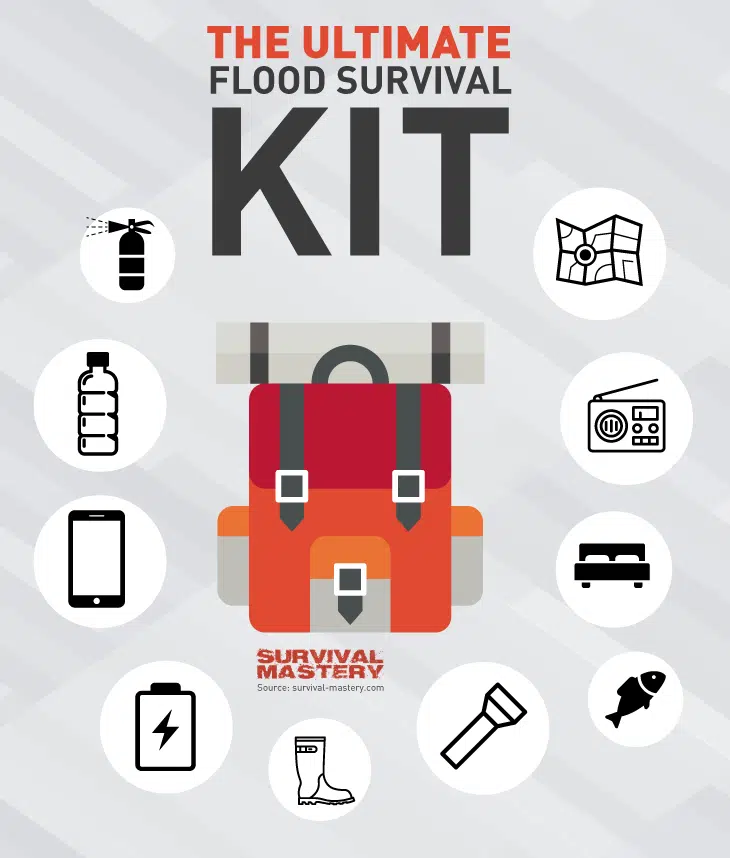
An efficient emergency kit must contain the following items:
- Fresh water for about 2 days for every member of your family. If you have pets you must include their needs in the kit too.
- Food (energy bars, nuts, dried fruits, canned food) for you (the adults) and for your children. If you have babies don’t forget the milk and the special food. Also food for your pets if there’s the case. You don’t know what your survival food kit should contain? We have a detailed list for you in our survival emergency food kits, take a look.
- Medication (regular and special if there is the case).
- Water proof bags.
- Important documents that you don’t want to get ruined in the flood and your identification papers.
- Backup batteries.
- Battery operated flashlight and a weather radio set on the emergency frequency.
- Blankets and rain coats.
- A first aid kit. There are a few good picks we selected for you, please read about it in this article.
- Water proof clothing and footwear (rubber boots) to help you get through all the water without getting too wet.
Remember, these are just the basic items. You should also think about anything extra you might need like diapers or extra cash. If you have pets, don’t forget to pack an emergency kit for them too.
How about flood insurance?
When the wrath hits, it’s nice to have a safety net that will slow down the fall. Part of the entire preparedness for floods action is to make sure that your insurance covers water damages. This way you’ll be able to recover faster after a big flood.
Of course, that insurance value fluctuates according to the area you live in, and the risk factors specific to it. When it comes to flooding, the main risk factor is the frequency of the event and your house’s location. If you are located in a place susceptible to flooding the risk of getting a new lake in the living room each season is bigger, thus the insurance will not be cheap. Still, it is worth every dollar; it’s pretty hard to recover after you see your entire life work destroyed in a few hours.
Even though floods are some of the most often natural disasters you might have troubles finding a good insurer. Most private insurers don’t offer flood protection as they don’t see the possibility to make a profit out of this. There are governmental programs, created especially for people who live in area that flood frequently.
So if you can’t find a good insurer, get in touch with local authorities and see if there is a program that can help you. As an example, in United States of America there is the National Flood Insurance Program (NFIP) managed by FEMA, a program meant to help communities reduce future damages produced by flooding.
[the_ad_placement id=”in-text-3-type-r”]Another thing that you must be careful about when talking about preparedness for floods is the fact that the flood insurance is activated after 30 days from the date you signed the deal. Anything that happens during this period is not covered. So, don’t waste any more time and start looking for a good insurance policy.
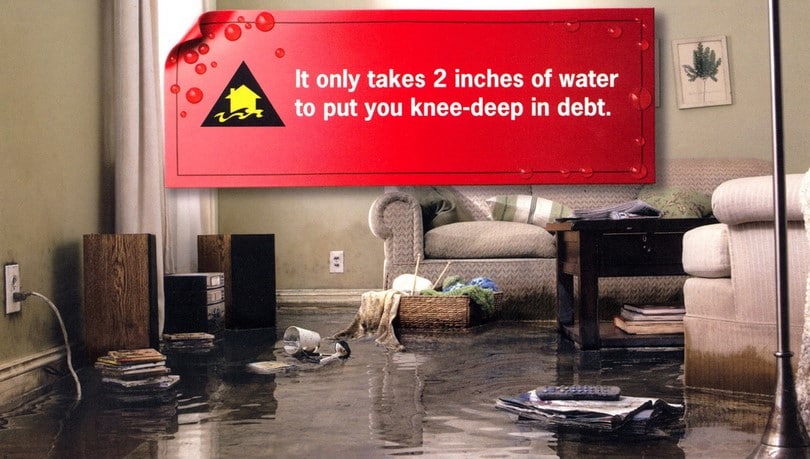
You must also know that flood insurance is available regardless of the fact that your house is situated or not in a flood risk area. If you hear anybody saying that your flood insurance is not available because you don’t live in a flood risk area you can correct them without any doubt.
We know that floods are scary and the idea of losing everything in the blink of an eye is totally terrifying but before signing any expensive insurance policy, educate yourself on the risk factor in your area. If you live in USA get in contact with FEMA and ask how to find out more about flood preparedness and flood insurance. Make sure that you live in an endangered area and measure the risk of your house being affected by a flood. All these information will help you learn more about how to prepare for a flood and what measures are absolutely necessary.
The main conclusion here is that, in case of a flood, all you can do in order to survive, is to be prepared. Floods are some of the most destructive natural phenomena and sometimes regardless of your efforts to stop them you still have to evacuate. If this happens you don’t have to think twice: take your emergency supply kit and your family and leave. If you have the time, take the furniture and valuables at the upper floor.
Don’t try to stay against authorities’ advice, rescue teams are already extra busy and they might not reach you in time. It’s true that a house that has been flooded needs lots of repairs but if you lose your family or your health during the flood it won’t be any better. Make sure that you are covered for most of the damages and try to follow the plan as discussed with your family during the flood preparation training.
Natural disasters are simply events in our lives that help us appreciate what’s important in life: our family and friends.



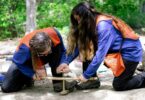
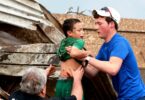

Another item you can add to your flood preparedness kits are empty plastic bottles. Ideally this should be the five gallon ones and their natural bouyancy (if sealed tightly) makes for a great floater and you can tied them together for an improvised raft.
Yes, they would be a good idea, but they occupy a lot of space. However, in the case of a flood you may actually find them floating around.
Thank you for this wonderful article, David. Preparation is the best investment. But I’d also like to add that during storms (that ultimately cause flood), especially harsh ones where the family is helplessly trapped in the house, and there’s no power, I think it’s also useful to have a portable heater ready as it could get really cold. Blankets are good, too, but I’d like to keep a heater ready just in case.
That’s a good idea, Barbara. However, you should use only portable space heaters that have been designed for indoors.